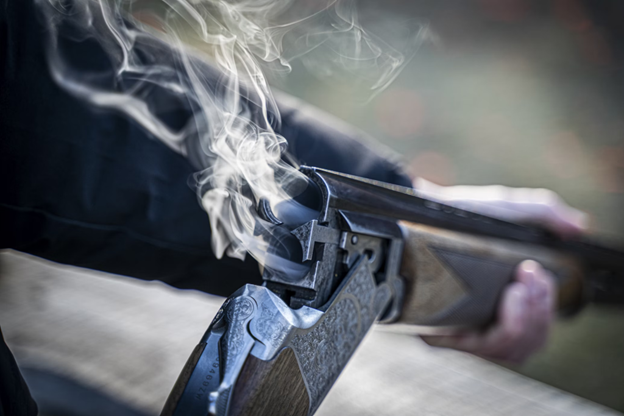Gunpowder, the pivotal invention that revolutionized warfare and shaped human history, continues to intrigue with its blend of chemistry and technology. From its ancient origins to modern innovations, the manufacturing processes and technologies behind gunpowder have evolved, driving military strategies and industrial advancements.
In this article, we delve into the intricate world of gunpowder manufacturing and technology, exploring its historical journey, contemporary methodologies, and future prospects.
Historical evolution
The genesis of gunpowder can be traced back to ancient China, where alchemists stumbled upon the potent mixture of saltpeter, charcoal, and sulfur. Initially utilized for fireworks and ceremonial purposes, its military potential was soon realized, leading to its adoption in warfare across Asia and later in Europe.
The medieval period witnessed the refinement of gunpowder compositions and manufacturing techniques, paving the way for the widespread use of firearms and artillery in battles.
The industrial revolution and beyond
The Industrial Revolution marked a significant turning point in gunpowder manufacturing, with mechanization and standardized production processes enhancing efficiency and output. Innovations such as the incorporation of ball mills for grinding ingredients and hydraulic presses for compacting powder further optimized the manufacturing chain.
The 19th and 20th centuries witnessed continuous advancements, including the synthesis of nitrocellulose and smokeless powders, revolutionizing firearms technology and propellant formulations.
Contemporary methodologies
In the modern era, gunpowder manufacturing has evolved into a highly sophisticated process, blending traditional principles with cutting-edge technologies. State-of-the-art facilities employ stringent quality control measures and automated systems to ensure consistency and safety in production.
Chemical engineering techniques are leveraged to tailor powder properties, optimizing burn rates, energy outputs, and stability. Additionally, environmental considerations drive the adoption of eco-friendly manufacturing practices and waste management strategies.
Key components and production process
Gunpowder comprises three primary ingredients: saltpeter (potassium nitrate), charcoal, and sulfur, each playing a crucial role in its combustion properties. The manufacturing process typically involves blending the components in precise proportions, followed by milling to achieve homogeneity.
Granulation techniques are then employed to produce desired particle sizes, influencing burn characteristics and performance. Quality assurance protocols, including particle size analysis and chemical testing, ensure compliance with specifications and regulatory standards.
Future prospects and innovations
As the demand for advanced propellants and energetic materials continues to rise, research and development efforts are focused on exploring novel formulations and manufacturing methodologies. Nanotechnology holds promise in enhancing powder performance and stability, with nanoparticles enabling tailored properties and controlled release kinetics.
Additive manufacturing techniques, such as 3D printing, offer new avenues for the on-demand production of customized munitions and propellant cartridges, revolutionizing logistics and supply chains.
The role of Hodgdon gunpowder
In the realm of modern gunpowder manufacturing, Hodgdon gunpowder stands as a hallmark of quality and performance, trusted by firearms enthusiasts and professionals alike for its precision formulations and consistent results. With a legacy spanning over seven decades, Hodgdon Powder Company has been at the forefront of propellant innovation, catering to the diverse needs of shooters, reloaders, and ammunition manufacturers worldwide.
From rifle and pistol powders to shotgun and muzzleloader formulations, Hodgdon offers a comprehensive range of products tailored to meet the stringent demands of modern firearms applications.
Gunpowder manufacture
The landscape of gunpowder manufacturing and technology is multifaceted, encompassing historical legacies, modern methodologies, and future innovations. Understanding the intricacies of propellant chemistry and production processes is crucial for optimizing performance and ensuring safety in firearms applications.
Whether exploring ancient alchemy or pioneering nanomaterials, the quest for advancement in gunpowder technology remains unabated, shaping the trajectory of military capabilities and industrial progress.
Conclusion
Gunpowder manufacturing and technology stand as a testament to human ingenuity and innovation, spanning millennia of development and adaptation. From its humble origins in ancient China to its pivotal role in contemporary warfare, gunpowder continues to shape global dynamics and technological frontiers.
As we navigate the complexities of propellant science and industrial production, the legacy of gunpowder persists as a symbol of both conflict and progress, echoing through the annals of history and the forefront of innovation.
In the realm of gunpowder, evolution is constant, with each advancement propelling us closer to new horizons of discovery and capability. As we gaze toward the future, the legacy of gunpowder endures, a testament to the enduring quest for knowledge and the enduring power of human ingenuity.




